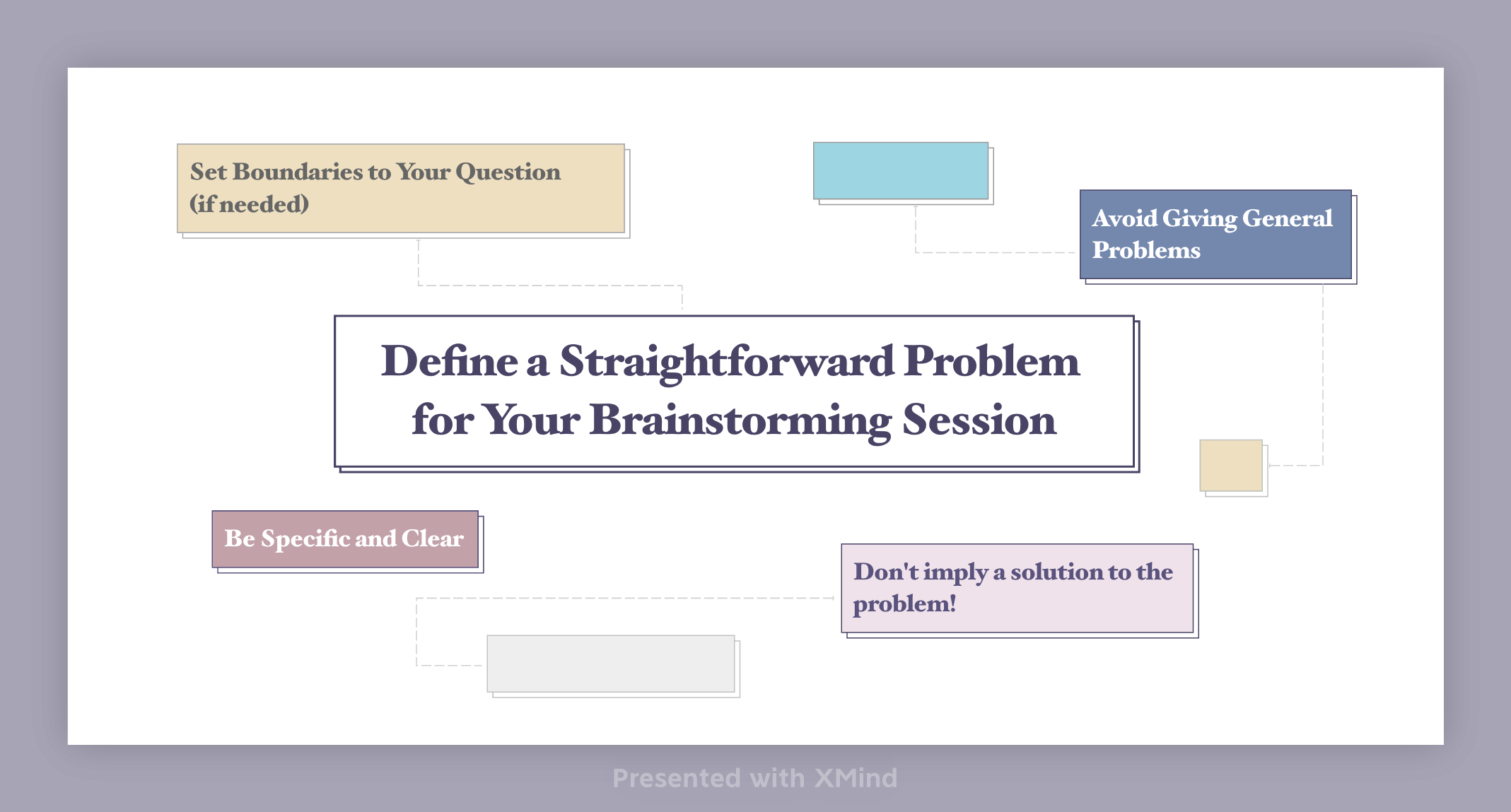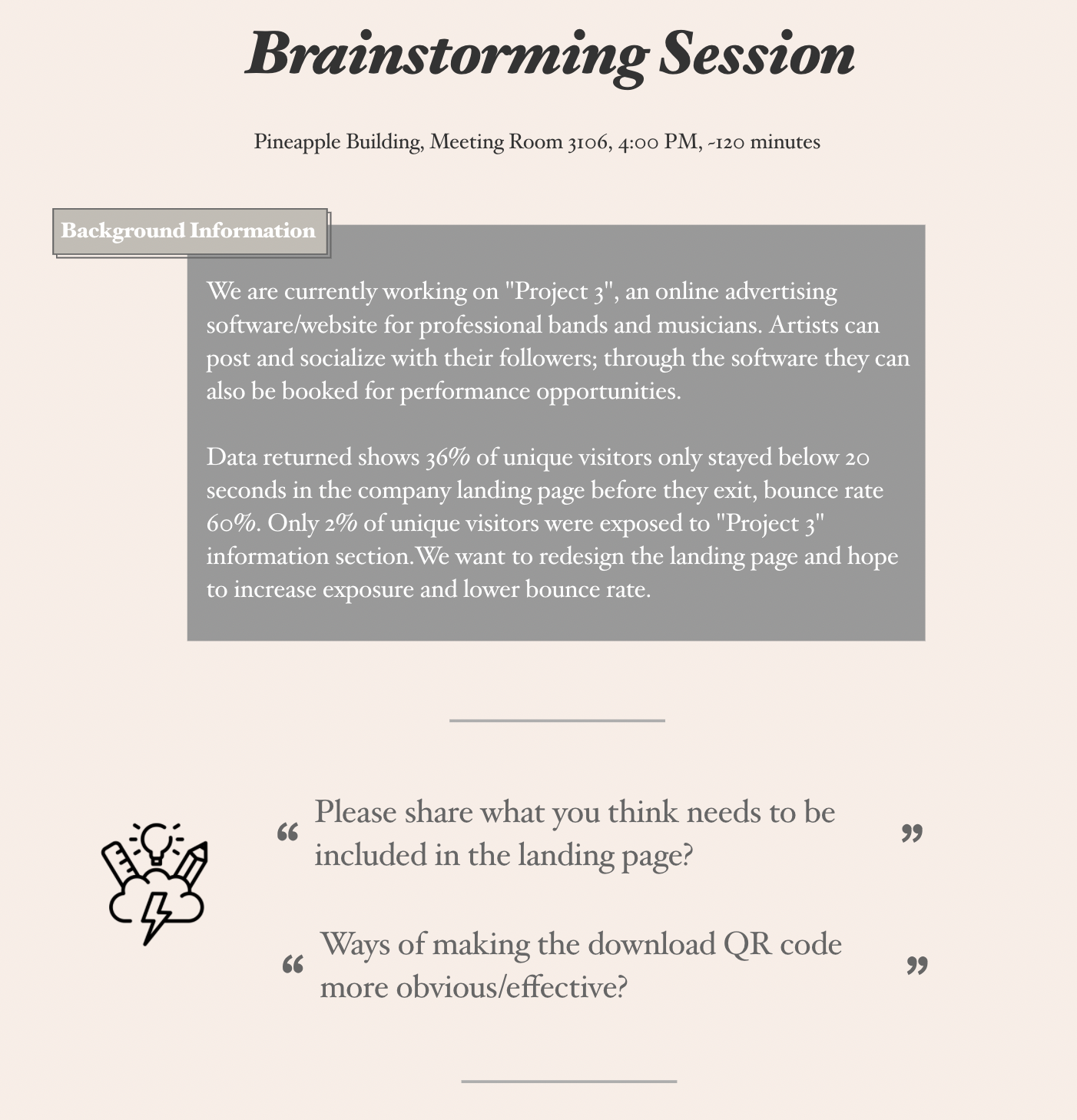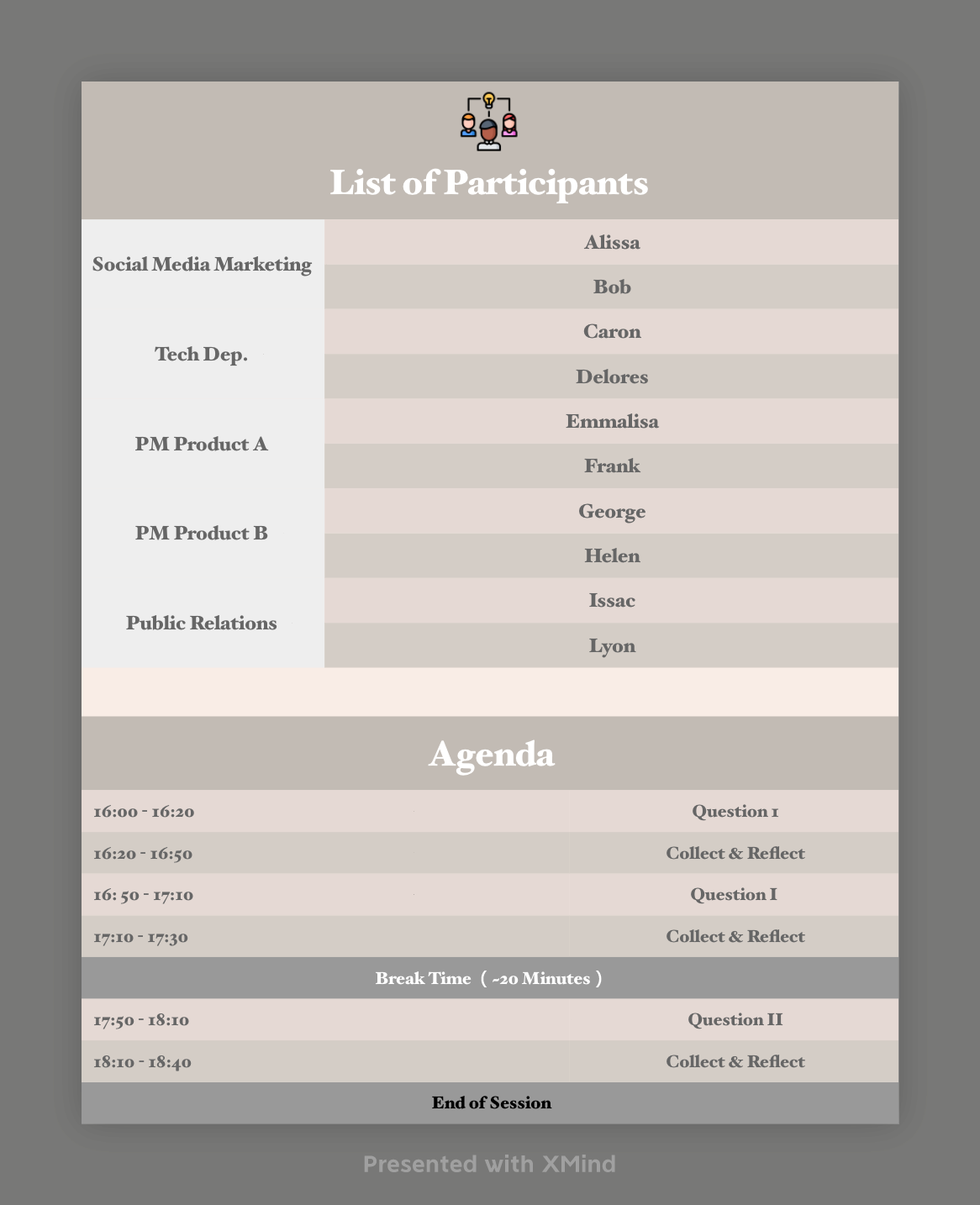6 Key Factors to Successful Brainstorming Sessions with XMind

6 Key Factors to Successful Brainstorming Sessions with XMind

Brainstorming is an activity that encourages all participants to toss out as many ideas as possible. New insights and inspirations may emerge from the clash of ideas, hopefully solving the challenge that the company/team is experiencing.
A list of 6 key factors to consider when planning a brainstorming session with your team members has been compiled based on research and study in the hopes of assisting you in getting the most out of your next brainstorming session.
Before the Brainstorming Session
Define a Fitting Problem/Goal
The common goal usually falls between discovering potential opportunities or finding answers to specific questions. Defining a problem for your brainstorming session to solve is thus crucial to have a productive brainstorming session.

Surprisingly enough, this technique of getting everyone together to share their ideas on a topic does not apply to every situation. Other than sessions with a way too general question, a brainstorm is also not applicable when the problem involves predictions of future outcomes.
One example is “How will the future users behave in virtual reality dominated social media platforms?” topics like this might set a barrier limiting only participants with technical knowledge or experience in this professional field of study to partake in the discussion.
Prepare the Participants Ahead of Time (w/ an Agenda)
An agenda of the upcoming session is constructive, trust me, especially for people with the “fear of the unknown” personality. Providing background information regarding the session, the problem/theme, and maybe attaching some data or report could help prepare participants well before the event.
Don’t forget to include in your information form the location, date, and time of the session; if the session is also happening online, remember to attach relevant details.
Notify all members about the rules of this brainstorming session. Is it freeform, as in everyone can pitch ideas whenever? Or is it a structured, group-by-group type of brainstorming session?
Here’s an example of what the background information and problem would look like for a project:

Consider using the tree table structure in XMind to build an agenda for all participants.

Use different shapes to decorate, categorize different parts, and insert links/files for easy access.
Remember to keep the list of attendees short, ideally not exceeding ten people; this allows everyone to get a chance to talk and keeps everyone from drowning in the sea of imagination.
A tip here is to keep a diversified list of participants, making sure there’s a mix of different job positions, cultural backgrounds, and age groups. Doing so will give better brainstorming results as it provides different perspectives. However, the elements mentioned are not requirements of an information sheet, and adjustments need to be made according to the defined problem.
Choose an Unbiased Facilitator
Preparing everyone ahead of time reduces the likelihood of awkward silence. By defining the problem, the participant can come up with their solutions. Divergent thinking, according to Leigh Thompson, a professor at Northwestern University's Kellogg School of Management, is a valuable asset while working alone.
But all the preparation will result in nothing without a competent facilitator! The facilitator takes the role of an unbiased peacekeeper; they should keep everything in place and make sure the session is on the right track.
During the Brainstorming Session
We give the relevant background information, the problem/theme of the brainstorming session, and time arrangements to all participants in the first step. In the second stage, we get into specifics.
By using XMind’s ability to create multiple sheets of mind map in a single file, you can store different stages of the project all in one place. Easy to share, to find, and to access.
Check out our past blog on 20+ free downloadable brainstorm templates made for instant use, find the one that meets the need of your team, and get ready to brainstorm.
Before the actual brainstorming action, the facilitator needs to consider the below factors for a smooth discussion during the brainstorming session.
Get Ideas Flowing
To avoid social loafing, some teams might consider brainstorming in a more structured format.
One common approach is to divide the participants into a few groups, set up time limits, and have one member of each group pitch an idea each round. This brainstorming process requires a note-keeping person who maintains the rules and documents the ideas shared among the members.
The facilitator during the brainstorming session needs to make sure there’s no dominating voice, no criticizing others, and tame viewpoints that might be too aggressive towards other members.

Categorize & Ask Follow-up Questions
Categorize the ideas after the first round of brainstorming, decide the categories collectively, and have the facilitator ask questions on concepts that need clarifying. Includes but not up to ideas that are hard to understand, vague, or varies with each individual.
After the Brainstorming Session
After Action Review
An after-action review (AAR) is a systematic review or debriefing (debriefing) process for the participants and those responsible for the project or event to analyze what occurred, why it happened, and how the team can do the session better. Always conduct an after-action review after each session to examine the brainstorming session results.
Nail down possible solutions, or plan the next session based on the given ideas. Consider using the Now Wow How matrix to rate the score of potential resolutions score or have members take a vote.
Use XMind for your next creativity burst!
Reference:
All icons used are made by Freepik and Gajah Mada from Flaticon.com
6 steps to organize a winning brainstorming session. BDC.ca. (2021, August 26). Retrieved January 19, 2022, from https://www.bdc.ca/en/articles-tools/business-strategy-planning/innovate/how-to-organize-successful-brainstorming-session
Torres, T. (2016, February 4). Why brainstorming doesn’t work (and what to do instead). Inc.com. Retrieved January 19, 2022, from https://www.inc.com/teresa-torres/why-brainstorming-doesnt-work-and-what-to-do-instead.html
Try Xmind Free

